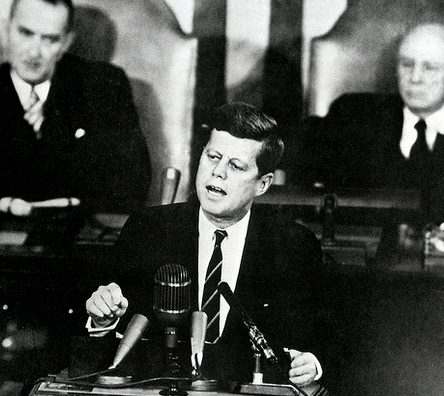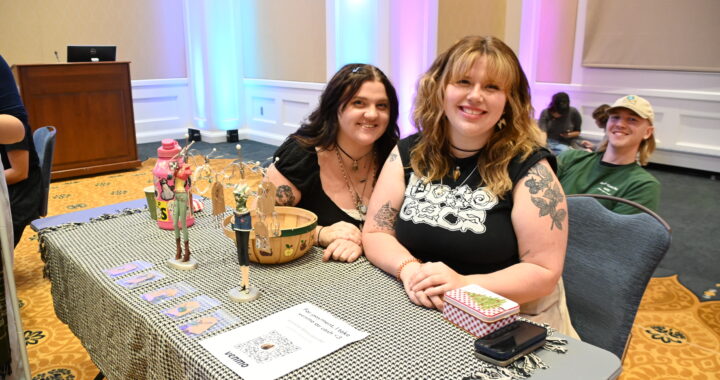‘Great Lives’ commemorates life of JFK
3 min read
By GINNY CLARK
“How many of you were alive and remember November 22, 1963?” asked Larry Sabato, looking out onto a completely packed Dodd Auditorium. Dozens of hands went up. “Ah, a fair number of you!” Sabato noted. “Well I suspect then that you remember not just the day, but how this stayed with you for years and years.” Audience members nodded.
There lay a resonating kind of truth in this. The assassination of President John F. Kennedy was not so easily forgotten, but etched into American memory for years thereafter.
This is what thousands of scholars and writers have dedicated their lives to: Kennedy, a man whose remarkable legacy lives beyond him. But few have captured a sense of the figure so honestly and successfully as Sabato. Author of the New York Times bestseller “The Kennedy Half-Century,” Sabato is the founder and director of University of Virginia Center for Politics. His PBS documentaries “Out of Order” and “The Kennedy Half-Century” have both won Emmys in 2013 and 2014, respectively. On Tuesday, Jan. 7, the University of Mary Washington welcomed Sabato to speak on Kennedy as part of the Great Lives Chappell Lecture Series.
Sabato’s passion for his subject, the life and legacy of Jack Kennedy, is immediately apparent on stage. Having handed out pro-Kennedy brochures as a seven year old in 1960, Sabato was very aware of the political figure from a young age on. He shared how, as a young Catholic student in 1963, the nun gently explained that the president had been shot, but was still alive. “So we took out our trusty rosaries,” Sabato recalled. “Every Catholic school kid had one, right in the desk.” Thirty minutes later, the class was learned of the president’s passing.
It seems like a bold choice for a biographer to delve into his own life. Senior Sarah Palmer, a history and English double major, commended Sabato’s choice.
“Something that struck me as I listened was the way that Sabato drew so much on his personal experience,” Palmer noted. “And in a way, a big part of his lecture was the strength of Kennedy’s legacy. It seems fitting that a talk on Kennedy focus strongly on what he meant to people.”
At Thanksgiving, just a few days after the assassination, everyone in Sabato’s large Italian-American family went around the table and asserted their conjectures. No two theories lined up. “Castro, it was Castro! No, it was the Anti-Castro Cubans! No, it was the CIA!” said Sabato, recreating a sense of the scattered conversation that night.
“You didn’t have the facts,” Sabato said plainly. “And so, it encouraged lots of speculation…It’s so unlike today when we see everything immediately. We never saw the Zapruder film of the actual assassination until 1975 – twelve years after the assassination!”
Considering our modern technology in 2015, it’s hard to believe that such vital information could be withheld for so long, or dispersed so slowly. But this distinct difference in the technologies of then and now is exactly why Sabato was so motivated to research the events of Nov. 22, 1963.
“We were able to produce [things] about the assassination that nobody ever has before,” said Sabato, referring to his analysis of the Dictabelt recording, alongside other pieces of evidence. “And the reason we were able to produce something new is because technologies are constantly changing and improving. And who knows what will happen in the future?”
Sabato also emphasized the importance of studying Kennedy’s impact on later presidents. “Each president tries to use his predecessors to accomplish his own goals and agenda,” said Sabato.
He gave the example of tax cuts used by Ronald Reagan – an economic strategy that Kennedy had implemented in his own presidency. Sabato remarked, “I absolutely insist that the world would not be here if Kennedy had not been here and made the decisions that he had made.”
“The Kennedys always wanted to go not the extra mile, but the extra hundred miles,” said Sabato. He then spoke of how, before America had ever landed on the moon, Kennedy aimed to land America on Mars. A NASA specialist had to explain to the president that with the available technology at that time, the endeavor was simply not possible. “And so,” Sabato said grinning, “Kennedy had to be convinced to settle for the moon.”
Sabato’s book “The Kennedy Half-Century” is available for purchase on Amazon and Barnes & Noble. Sabato also runs a free online course on Kennedy through the University of Virginia.


